#Triaxial
Text
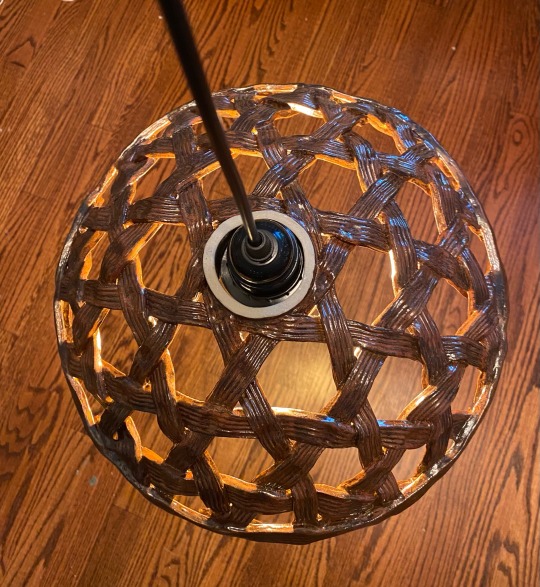
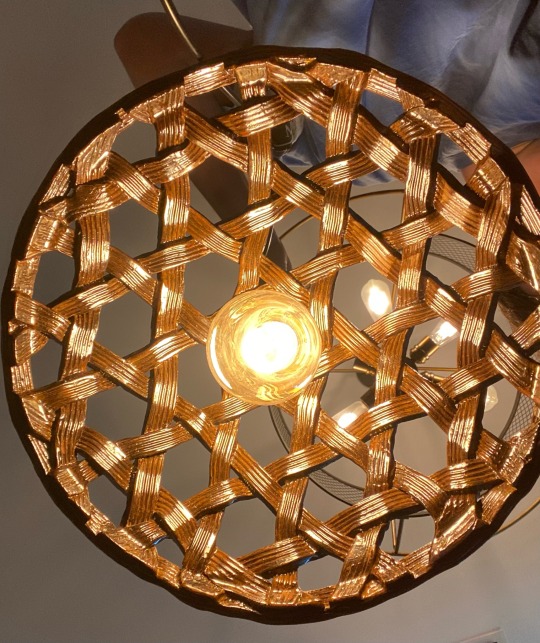
Pardon the garbage pictures, but I’m super proud of this one! Fun fact, this one made me very popular with older ladies into weaving.
#stoneware#handbuilt pottery#handbuilding#weaving#triaxial weave#didn’t know that was what it was called. thanks Janet!#lampshade#my art tag
5 notes
·
View notes
Text
Hexweave Cloth in WoW is probably meant to refer to hexes like spells, but I can't help but imagine it all as being triaxially woven so that the pattern of the weave forms hexagons rather than squares, and I'm in danger of giving myself more projects to try and figure out how to do it at that scale
#most of the projects I'm seeing seem to be more like. basket weaving or tiny little samplers with ribbon#And I'm trying to think of how you could scale that up (or down rather?) for yardage#But most of the things I can find for full scale triaxial looms seem to be limited to heavily industrial applications#As in like.. carbon fiber material#The best case I'm seeing for hand weaving is hexagonal or triangular looms that are a couple feet wide#and then that's it that's the size of your fabric#Which isn't good enough!!#watch me get way too invested in this and try to reinvent the wheel (loom) and ignore all the projects I should be working on
0 notes
Text
Forsentek Co., Limited supplys multi axis load cells for force measurement and control in industrial field. 3 axis load cell
#3 axis load cell#multi axis force sensor#multi-axis load cell#3-axis force sensor#triaxial load cell
1 note
·
View note
Text
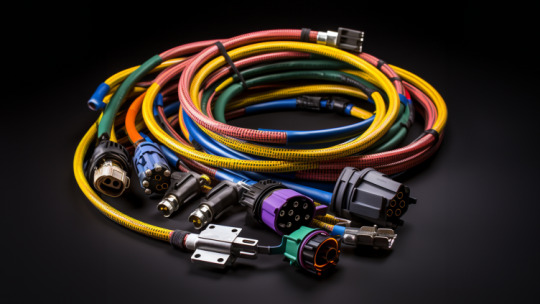
Harness Braiding & Over Mold: Elevating Cable and Wire Assembly Standards
In the intricate world of electrical systems, the quality and reliability of components play a pivotal role. As industries evolve, the demand for advanced solutions like Harness Braiding & Over Mold becomes increasingly evident. These techniques not only enhance the durability of wire harnesses, but also ensure optimal performance in diverse environments.
At Avalon, we recognize the nuances of this dynamic field. Our commitment to excellence is reflected in our adherence to industry standards and our continuous pursuit of innovation.
A Deep Dive into Avalon's Expertise
Harness Braiding & Over Mold: Our state-of-the-art techniques in harness braiding provide added protection and strength to wire harnesses. Coupled with advanced over-molding processes, we ensure that our products are resilient against external adversities and are tailored to meet specific demands.
Continuity & Hi-Pot Testing: Safety and reliability are paramount. Our rigorous continuity and hi-pot testing procedures ensure that every wire harness and cable assembly we produce meets the highest standards of electrical safety and performance.
Radio Frequency Testing: In an era dominated by wireless communication, ensuring the seamless transmission of radio frequencies is crucial. Our RF testing capabilities guarantee that our products are optimized for consistent and efficient RF transmissions.
IPC 620 Standard: Adherence to the IPC 620 standard underscores our commitment to quality. This global standard for wire harness and cable assembly ensures that our products are crafted with precision and consistency.
MIL SPEC Harness Standards: Catering to both commercial and military applications, our products are designed in line with MIL SPEC harness standards, ensuring robustness and reliability in even the most demanding scenarios.
In a domain where precision, safety, and efficiency intersect, Avalon stands as a beacon of innovation and quality. Our mastery in Harness Braiding & Over Mold, combined with our rigorous testing protocols and adherence to global standards, positions us as a leader in the cable and wire harness industry.
In a world where connections matter, Avalon is dedicated to forging bonds that last, ensuring unparalleled excellence in every wire, every cable, and every harness.
#Avalon Harness#Wire Harness Tech#Cable Assembly#Custom Harness#MILSPEC Design#Over Molding#SolderingTech#Harness Braiding#Coaxial Cable#Triaxial Cable#RF cable Assembly#Braid Cable#Electro Mechanical Harness
0 notes
Text
Cyclic Triaxial Test Equipment | Enhance Geotechnical Testing
Improve geotechnical testing accuracy with our cyclic triaxial test equipment. Trust in our reliable solutions for cyclic and dynamic soil behavior analysis.
#cyclic triaxial test equipment#automatic direct shear test#automatic consolidation test apparatus#flexible wall permeability test apparatus#Resonant column test apparatus#cyclic simple shear test apparatus#Utrasonic P&S velocity test apparatus#Rock triaxial testing equipment
0 notes
Text
life in america isn’t as simple as you guys think. literally every day i have to wake up, walk down the ten billion steps of my Infinite Triaxial Apartment Complex and take microplastics from the burger mine to the parking lot architect and then use my singular job token to decide if id like a big drink, Hobby Time, or one new article of clothing. it’s so hard living here. you just don’t get it.
71 notes
·
View notes
Text
The Triaxial Theory of Horror
I have a theory that most horror fits into a volume of conceptual space described by 3 axes, which are:
Discrete--Diffuse
Mobile--Sessile
Wet--Dry
The Discrete--Diffuse axis describes the source of the horror. A Discrete horror has a physical, usually tangible form; is recognizable as the source of the horror; and takes actions which make it horrifying. On the opposite end of the scale, a Diffuse horror is one with no obvious source, center, or primary actor. Most of Steven King's work falls on the Discrete end of this scale; Silent Hill falls close to the middle; and The Others lands on the Diffuse end.
(As a note, any point on this axis can be done badly; hamfisted Discrete horror rapidly enters a space I call "Ooga-Booga Horror," where the object/entity/what-have-you is so cartoonishly scary as to wrap back around to being silly. Likewise, poorly handled Diffuse horror becomes "Vapor Horror," which is so completely sourceless as to be nonsensical.)
The Mobile--Sessile axis, meanwhile, describes the behavior of the horror. A Mobile horror is one that hunts, pursues, clings, reappears, or otherwise moves around; 80's slasher flicks being a prime example. Sessile horror, in contrast, stays put, and the horror derives either from the inability to escape its radius of influence or the inability to stay away; The Haunting of Hill House nearly exemplifies the far end of the axis.
(Here, too, poor handling can lead to the inversion of horror into comedy, on a scale from "Imma Gonna Getcha" to "Just Leave, Bro.")
Finally, the Wet--Dry axis deals with the effects of the horror, and is essentially equivalent to the gross-out factor. Typically, Wet horror is rich in blood, brains, and body parts, while Dry horror keeps its victims physically intact; however, this scale is not necessarily coupled to the presence or absence of viscera. For example, The Color Out of Space involves significant bodily disturbance, yet remains relatively Dry due to the elision of details. In the same vein (but in the opposite direction), Crimson Peak is an exceedingly Wet horror film, yet utilizes actual gore quite sparingly, preferring to shift the language of decomposition onto the inanimate house; yet its substitution of red clay for blood in no way lessens the Wetness of the horror.
(And as expected, this axis has its own hilarious pitfalls; over-the-top gore rapidly enters "Blood Fondue" territory, while excessively dry horror risks becoming "Totally Scary, Trust Me." Some would argue that The Color Out of Space indeed represents a plunge into the latter category.)
Some examples, then, of the triaxial scale in action:
NBC's Hannibal is Discrete/Mobile/Wet. Hannibal is the primary source of the horrifying events, he can and will chase you down, and when he does, it's going to get messy.
Saw is Discrete/Sessile/Wet. While the threat of bodily harm is similar, and its source similarly known, as in Hannibal, the texture of the horror is significantly altered by the confined setting.
House of Leaves is two horrors stacked up in a trench coat: the parts dealing with The Navidson Record are Discrete/Sessile/Dry, while Johnny Truant's narrative is Diffuse/Mobile/Wet.
Likewise, The Shining nests Discrete/Mobile/Dry horror (Jack chasing Wendy around with an axe) inside Diffuse/Sessile/Wet horror (the Overlook Hotel itself).
Silent Hill, as mentioned, is close to centered on the Discrete-Diffuse axis, and is also nearly centered on the Mobile-Sessile axis, although it is consistently Wet.
The Magnus Archives utilizes all three axes nearly to their fullest extents, but tends to cluster in the Discrete/Mobile/Wet octant.
To be sure, there are elements of horror not described by these axes--internal vs. external, active vs. passive, certain vs. uncertain doom--but as a system for interpreting and categorizing the main structural elements of horror, and particularly for describing one's preferences in horror, the triaxial scale functions well.
118 notes
·
View notes
Text

Experimental analysis, computer simulations reveal how woven fabric composites are deformed by heat
Materials called triaxially woven fabric composites (TWFCs) have fibers woven together in three directions, commonly at a 60-degree angle to each other. They are increasingly used in many applications but their response to heating and cooling has not been well-studied.
Materials scientist Ahmad Kueh at the Universiti Malaysia Sarawak (UNIMAS) has now conducted a detailed examination of this significant knowledge gap. His results are published open access in the journal Heliyon.
The new experimental and theoretical understanding of a twisting motion on heating will help predict the material's structural integrity and performance in different and changeable conditions. "These innovative findings hold significant implications for a wide range of applications, especially in the design of heat-resistant materials essential for the aerospace sector," says Kueh.
Read more.
12 notes
·
View notes
Text


Asteroid's orbit, shape changed after DART impact
After NASA's historic Double Asteroid Redirection Test, a JPL-led study has shown that the shape of asteroid Dimorphos has changed and its orbit has shrunk.
When NASA's DART (Double Asteroid Redirection Test) deliberately smashed into a 560-foot-wide (170-meter-wide) asteroid on Sept. 26, 2022, it made its mark in more ways than one. The demonstration showed that a kinetic impactor could deflect a hazardous asteroid should one ever be on a collision course with Earth.
Now, a new study published in the Planetary Science Journal shows the impact changed not only the motion of the asteroid but also its shape.
DART's target, the asteroid Dimorphos, orbits a larger near-Earth asteroid called Didymos. Before the impact, Dimorphos had a roughly symmetrical "oblate spheroid" shape—like a squashed ball that is wider than it is tall. With a well-defined, circular orbit at a distance of about 3,900 feet (1,189 meters) from Didymos, Dimorphos took 11 hours and 55 minutes to complete one loop around Didymos.
"When DART made an impact, things got very interesting," said Shantanu Naidu, a navigation engineer at NASA's Jet Propulsion Laboratory in Southern California, who led the study.
"Dimorphos' orbit is no longer circular: Its orbital period"—the time it takes to complete a single orbit—"is now 33 minutes and 15 seconds shorter. And the entire shape of the asteroid has changed, from a relatively symmetrical object to a 'triaxial ellipsoid'—something more like an oblong watermelon."
Dimorphos damage report
Naidu's team used three data sources in their computer models to deduce what had happened to the asteroid after impact. The first source was aboard DART: The spacecraft captured images as it approached the asteroid and sent them back to Earth via NASA's Deep Space Network (DSN). These images provided close-up measurements of the gap between Didymos and Dimorphos while also gauging the dimensions of both asteroids just prior to impact.
The second data source was the DSN's Goldstone Solar System Radar, located near Barstow, California, which bounced radio waves off both asteroids to precisely measure the position and velocity of Dimorphos relative to Didymos after impact. Radar observations quickly helped NASA conclude that DART's effect on the asteroid greatly exceeded the minimum expectations.
The third and most significant source of data is ground telescopes around the world that measured both asteroids' "light curve," or how the sunlight reflecting off the asteroids' surfaces changed over time. By comparing the light curves before and after impact, the researchers could learn how DART altered Dimorphos' motion.
As Dimorphos orbits, it periodically passes in front of and then behind Didymos. In these so-called "mutual events," one asteroid can cast a shadow on the other or block our view from Earth. In either case, a temporary dimming—a dip in the light curve—will be recorded by telescopes.
"We used the timing of this precise series of light-curve dips to deduce the shape of the orbit, and because our models were so sensitive, we could also figure out the shape of the asteroid," said Steve Chesley, a senior research scientist at JPL and study co-author. The team found Dimorphos' orbit is now slightly elongated or eccentric.
"Before impact," Chesley continued, "the times of the events occurred regularly, showing a circular orbit. After impact, there were very slight timing differences, showing something was askew. We never expected to get this kind of accuracy."
The models are so precise that they even show that Dimorphos rocks back and forth as it orbits Didymos, Naidu said.
Orbital evolution
The team's models also calculated how Dimorphos' orbital period evolved. Immediately after impact, DART reduced the average distance between the two asteroids, shortening Dimorphos' orbital period by 32 minutes and 42 seconds to 11 hours, 22 minutes, and 37 seconds.
Over the following weeks, the asteroid's orbital period continued to shorten as Dimorphos lost more rocky material to space, finally settling at 11 hours, 22 minutes, and 3 seconds per orbit—33 minutes and 15 seconds less time than before impact. This calculation is accurate to within 1 ½ seconds, Naidu said. Dimorphos now has a mean orbital distance from Didymos of about 3,780 feet (1,152 meters)—about 120 feet (37 meters) closer than before impact.
"The results of this study agree with others that are being published," said Tom Statler, lead scientist for solar system small bodies at NASA Headquarters in Washington. "Seeing separate groups analyze the data and independently come to the same conclusions is a hallmark of a solid scientific result. DART is not only showing us the pathway to an asteroid-deflection technology; it's revealing a new fundamental understanding of what asteroids are and how they behave."
These results and observations of the debris left after impact indicate that Dimorphos is a loosely packed "rubble pile" object, similar to asteroid Bennu. ESA's (European Space Agency) Hera mission, planned to launch in October 2024, will travel to the asteroid pair to carry out a detailed survey and confirm how DART reshaped Dimorphos.
TOP IMAGE....The asteroid Dimorphos was captured by NASA’s DART mission just two seconds before the spacecraft struck its surface on Sept. 26, 2022. Observations of the asteroid before and after impact suggest it is a loosely packed “rubble pile” object. Credit: NASA/Johns Hopkins APL
LOWER IMAGE....This illustration shows the approximate shape change that the asteroid Dimorphos experienced after DART hit it. Before impact, left, the asteroid was shaped like a squashed ball; after impact it took on a more elongated shape, like a watermelon. Credit: NASA/JPL-Caltech
2 notes
·
View notes
Text
i love and hate wikipedia rabbit holes because sometimes i kinda get what’s going on like with humanities or art shit
and then i click on the link for Haumea, a dwarf planet that’s a Jacobi ellipsoid (a triaxial ellipsoid (a sphere deformed by an affine transformation (a geometric transformation that preserves lines and parallelism but not necessarily Euclidean distances (the length of a line segment between two points in Euclidean space) etc etc
#like. it’s every new word#i have 70 tabs open#this is utterly incomprehensible but i hope someone understands#scrapsyaks
32 notes
·
View notes
Text
Heya @cuppajj Spector_Author wrote some more of her shipformer with LL. Very cute this time.
Hope you enjoy.
“Come on Scaler!” Jester had a brisk pace as she strode down the hallway towards the airlock.
“I’m coming, I’m coming! Jeez!”
“I should hope so.” Came from ahead of them. Rodimus was leaning against the frame of the airlock, he high fived Jester as she bounced to a stop next to him. “You’d think with legs like that you should be able to keep up.”
“Yeah, yeah.” Scaler grumbled. “I’m only lagging behind because energy conservation is a real thing.”
It was a weak excuse, and they knew it. Rodimus knew it too, he snorted.
“Sure, but I prefer to spend my energy on something cool or fun, mostly both. Anyway, come on! I hear there’s a drink at Swerves with my designation on it.” He paused. “literally. I had Swerve carve my name into a glass, broke three doing it but it looks sick.”
Jester chuckled, looking half amused and half exasperated. “I’ll bet.”
Rodimus gestured to the airlock. “Well come on and I can show you!”
Scaler watched as Jester started bantering back and forth with the captain of the Lost Light, following them through the airlock, only dragging their peds a little. This would be their first visit onto the ship, they had been avoiding it for reasons… good reasons.
For one they didn’t really want to go, and two they wouldn’t have access to the cameras to see where they were going. Even if they did have system access, they heard the camera coverage was crap, only a handful were actually working. They’d been talking with some guy from Rodimus’ ship that someone named Red Alert had been trying to get all the cameras fix-
Scaler took a step out of the airlock and froze… it felt wrong. Something that shook them down to their struts. It wasn’t right… they should-
“Scaler? You okay?”
“Yeah, yeah, I’m fine.” They weren’t paying attention, that feeling of wrong permeated nearly every sensor they had. It was like moving a puppets hand as they waved at Jester. “Ya’know go ahead without me, just remembered I forgot I needed to calibrate the triaxial coordinator circuits… kinda need those… I’ll uhhh… catch up with you.”
Jester frowned. “You sure?”
Scaler nodded, it was like moving a hinge up and down. “Yeah. Don’t want the ship to explode and all that.”
“Okay… but comm me if you need any help.”
Scaler waved again. “Go have fun.”
It was only a few steps before they were back on their ship. Only a few steps for the feeling of wrong to ease away. Scaler accessed an external camera and looked at the ship next to the Fastest Dark.
It was huge, floating in orbit around a gas giant alongside their ship. The only thing tethering the two ships together was the airlock clamps and a weak ion tractor beam. Nothing about the outside of the ship screamed that sense of wrong to Scaler… it was a ship.
Still… something stray string of thought curled in their processor.
They needed to test something.
Down three levels and over two corridors. Unseen, Scaler slipped into the engine room, locking the doors shut behind them. The code that locked the door was the highest priority that existed on the Fastest Dark, not even Tarmac’s, Jesters, or Claxons codes could open it now.
--
Skyline’s awareness aways started with the bridge, it was simply where everything tended to happen. First the cameras, then his internal sensors, on his hud the internal announcements appeared, and finally the external sensors started feeding data to his processor. The whole process took seconds, but he couldn’t help but wish it was just a bit faster.
Especially the external sensor’s part, cause there was a ship much bigger than him very close by.
Skyline tended to think of himself as big, but the ship- the Lost Light- dwarfed him. He wasn’t even as big as two of their side thrusters. Hell, some of the window were even big enough he could see his ships name reflected in the glass. It was… weird to see kraD tsetsaF floating by an external camera.
There was only one thing weirder… Skyline shivered a set of panels in the cargo bay, if he was transformed he could say his spark was in his throat. He was nervous.
But if he was right…
Skyline carefully pushed out a bit of his EM field, he had to be really careful not to let his passengers feel the fluctuations. Mostly the crew was used to his field being smoothed and calm, something in the background, they didn’t even realize they were surrounded by his EM field it was that much part of the background. Now it was a brush full of curiosity/excitement/disbelief, way too easy to detect if he wasn’t carefully. Skyline stretched his field a bit more, creeping along the airlock connectors. Just a bit farther aaaaaand…. it brushed up against another EM field, a big one, one as big as his.
It gently pushed back with curious/surprise.
Uh oh. Quick a wink, Skyline reeled his field in, pulling it back to his outer hull plating. What did he do? He hadn’t met another… uh- another ship before. Not like this. Were there rules for it? What did he say? Okay, he was kinda panicking.
He was very much panicking, with his thruster trembling and everything.
A comm ping hit his communications array. It was on a sub frequency, those always got routed straight to Skylines circuits, not to the comm controls on the bridge where Tickertape was on duty. It was hard to use the sub frequencies, something tricky with receiving it, so only ships outfitted with the circuits could use it- Skyline blinked, his optics shuttering deep within his frame, hidden in a room with no door. Only ships~
They wanted to talk to him.
The Lost Light wanted to talk to him. He felt giddy.
Before he could change his mind he sent a ping back… and waited… his internals were shifting around, creating a hell of a noise in some empty rooms and maybe next door to Claxons room.
A comm channel opened.
If Skyline breathed he’d be holding his breath.
::Hello?::
Oh they sounded surprised, like they didn’t think anyone would answer. What did he say? What should he say? Oh crap, he was taking too long-
::Uuuhh- duh, uh- Hi- Hi- Hello- Sorry- um… Hi::
The voice on the other end of the comm line- The Lost Light chuckled softly, they had a soft voice, it really reminded Skyline of when Jester’s niece was younger and she’d croon soft babbling words at the tiny organic in her hand.
::It’s alright, no apologies necessary. It’s a surprise to meet another shipformer::
::I know! You’re the-:: Skyline clamped down on his excitement, he could be calm. ::You’re the first one I’ve met… I thought…::
::You were alone?:: There was that soft chuckle again, Skyline just wanted to wrap it around his spark it was so full of warmth. ::In this universe with your crew with you, we’re never alone. And hey, we’ve met now::
::Yeah, we have::
Deep in his engine room, lights danced happily as his spark swelled. Skyline pressed his field outwards and got a firm brush back of happy/delight/amazement. Skyline hesitated for a moment before he said.
::Can… Can I ask you something?::
::Of course my friend, I have a feeling we have lots to talk about::
Skyline’s spark swelled in its chamber again.
--
Rodimus suddenly looked over his shoulder, like he’d heard a noise…. Which wasn’t wrong, it was noisy in Swerves, but Jester couldn’t figure out what specific noise he was looking for in the whole cacophony. She sipped her custom drink from Swerve. “…You alright?”
“Oh yeah, I’m fine.” Rodimus said, he was still scanning the room. “Just the ship seems quiet. It’s weird.”
Jester nodded slowly. “It’s weird?... How many of those Comet Trails have you had?”
Rodimus snorted and threw back the rest of his current Comet Trail, the sparkly mercury and bismuth mix leaving fine traces of glitter on his lips. “Not enough to do anything, just… had a feeling you know? Captainy thing.” He shrugged. “Or maybe a prime thingmy? Either work, but it’s fine.”
“If something explodes-”
“We blame Whirl or Brainstorm… sometimes Tailgate, but that was one time.”
Jester laughed and drank the rest of her own drink. “There’s a story behind that, I know it.” “You think that’s a story?” Rodimus grinned. “Let me tell you a story.”
#spector_author#ao3 link#ao3fic#ao3#she's very happy how this one turned out#transformers#fastest dark
32 notes
·
View notes
Text
Electric Bike Winter Maintenance Guide!
The weather is getting colder and colder, presumably many friends are still rain or shine, and can't bear to close the car. If a worker wants to do a good job, he must first sharpen his tools. Electric bicycles can be said to be sports machines. To make this machine exert its maximum power, you must pay attention to the maintenance of your car when riding in winter. A comprehensive inspection of your car after leaving the car can not only prolong the service life of the car. It can eliminate many hidden dangers and improve safety! Let's take a look at the winter maintenance guide for electric bike!
Maintenance description and purpose of each part of the bicycle:
1. Head
Maintenance description: Check whether the bearings at the upper and lower ends of the head tube can be used normally, clean and oil the bearings.
Maintenance purpose: to clean the dust and sludge of the bearings in the head tube, to prevent bearing damage, rust and abnormal noise.
2. Axis
Maintenance description: Check whether the center shaft can be used normally, clean and oil the bearings.
Maintenance purpose: to clean the dust and sludge in the bottom bracket and bottom bracket to prevent damage, rust and abnormal noise of the bottom bracket.
3. Wheel front and rear hubs
Maintenance description: Check whether the hub can be used normally, clean and oil the balls in the hub.
Maintenance purpose: Check whether the hub can be used normally, clean and oil the balls in the hub.
4. Wheel set adjustment (front and rear wheels)
Maintenance description: Put the wheel set on the ring adjustment table to check whether it is deflected, and adjust it according to the situation (Nalong)
Maintenance purpose: to reduce the deflection of the wheel set to make the handling better.
5. Transmission system (front and rear derailleurs, flywheels, chains, cranksets)
Maintenance description: Check the transmission system: whether the front and rear derailleurs, flywheels, chains, and chainrings can be used normally, clean the dust and sludge, replace with new oil, and adjust the gear.
Maintenance purpose: reduce excessive wear caused by sludge and other sundries, and prolong the service life of flywheel and chain.
6. Frame
Care Description: Clean the body and remove stains.

Electric bike maintenance process
Step 1: Clean the Dirt
If the body is not very dirty, just wipe it with a damp soft cloth; if there are many mud spots, you can wash it with a water hose. It should be noted that the pressure of the water column should not be too high. At the same time, the rotating parts such as triaxial and headset cannot be washed directly with water. A toothbrush can be used for places that cannot be wiped by a rag, and the upper tube of the front fork should also be removed with a toothbrush to avoid scratches during shock absorbers. Both the rim and the brakes need to be cleaned to remove the impurities embedded in the brakes and reduce unnecessary wear and tear. Brakes and shift cables should also be wiped clean. If there is a lot of mud and sand, the wire tube can be removed and the internal chain can be cleaned with the spray pressure of the anti-rust agent. The most dust-absorbing place on the whole car, wipe off the stains with a rag. If it is very dirty, you can use an anti-rust agent to clean it. Remember to dry the chain after completion to facilitate subsequent chain oiling.
Step 2: Lubricate
Brake and shifting line pipes need to be re-oiled after cleaning, and grease lubricating oil with weak fluidity is suitable for use on the line pipes. The chain is an important part of the transmission, and it also has high requirements for oiling. Generally, 5-6 drops can be added at a time. After adding, let the chain fully rotate, and at the same time bring lubricating oil to each tooth piece, and dry the chain with a rag after adding. After cleaning the upper tube of the front fork, special lubricating oil should be used to keep the front fork moving smoothly in winter.
Step 3: Prevent Rust
After riding, it is recommended to apply some anti-rust agent to the various screws and transfer points on the bicycle. Firstly, it is anti-rust, and secondly, it is also good for future disassembly.
Electric Bike Winter Maintenance Guide!
3 notes
·
View notes
Text
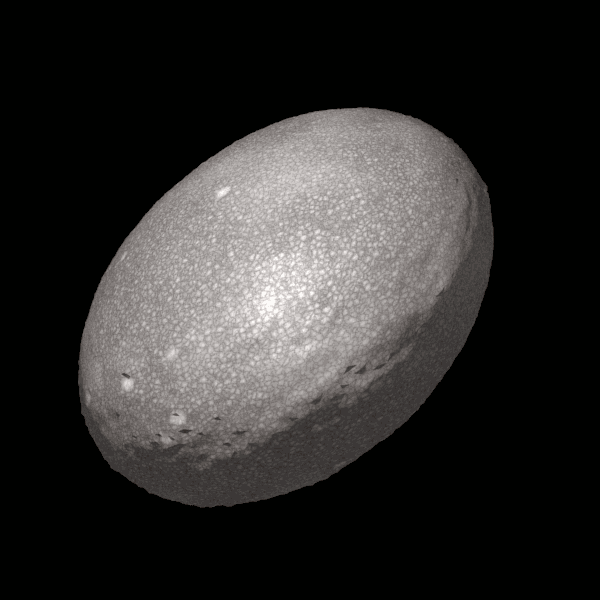
*rotates you so quickly that you are distorted into a triaxial ellipsoid*
4 notes
·
View notes
Text

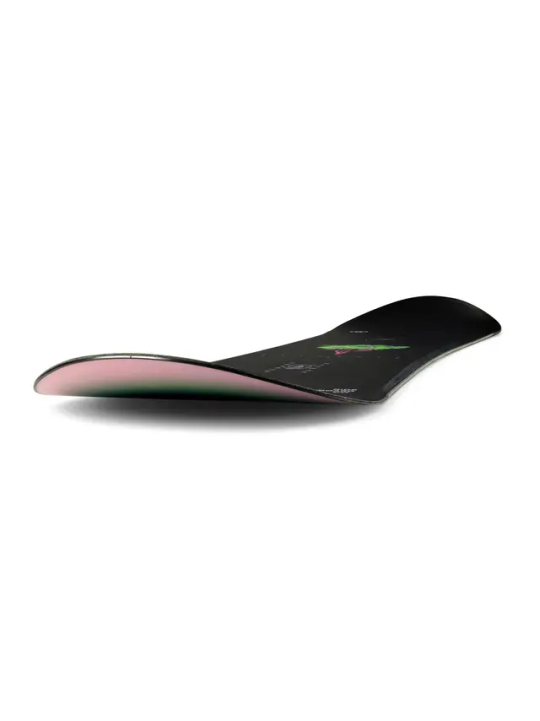

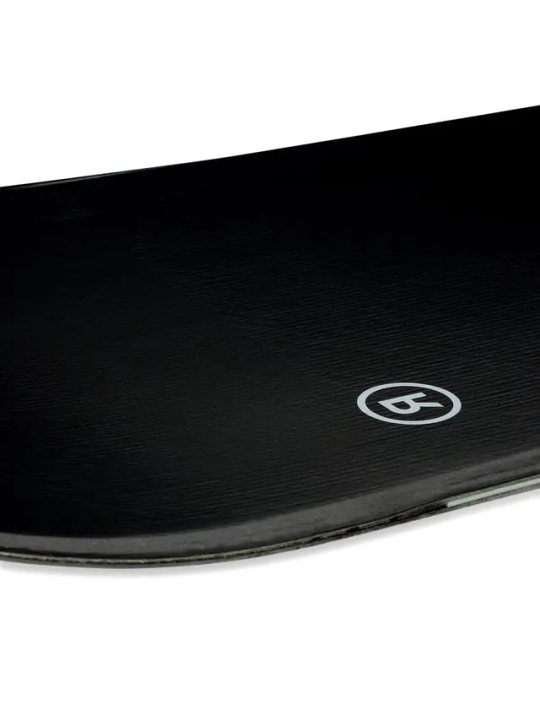

RIDE SATURDAY SNOWBOARD 2024
4/2024 Sale $240
Size 138, 142, 146, 150, 154
Sintered, Stone Ground base
The Saturday is a twin shape that is at home anywhere on the mountain. The standard camber profile provides camber between your bindings for snap and control and rocker at the tip and tail for catch-free riding and float. A Quadratic Sidecut improves turn initiation and exit as well as edge grip. Slimewalls® provide a smooth ride and increase durability by absorbing impact. Carbon Array 3™ provides extra pop and control without adding stiffness. The Saturday is a mid-flexing twin built for the intermediate to advanced riders that want one board for all conditions.
youtube
SPECIALTY = All Mountain, Park, Groomers
COLLECTION = Resort Sport
ABILITY LEVEL = Intermediate, Expert
RESPONSE = Medium
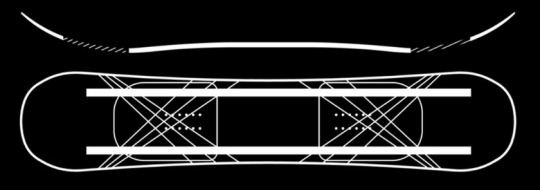

QUADRATIC SIDECUT:
Blending of three radii to improve turn initiation/exit while providing the best grip possible. This design is uniquely formulated for each model based on its shape and riding style.
SLIM WALLS:
RIDE's Slim Wall technology is the evolution of our Roll-in Construction to its extreme limit. By creating a fully 3-D composite structure over Slimewall® material, this revolutionary technology results in more efficient energy transfer, lighter weight construction, and even better damping.
CARBON ARRAY LAMINATES:
This power distribution technology provides total board control in every stance location. Widespread carbon stringers placed at the binding zone gather input from any stance width and all pressure angles. Rider input is then channeled to the opposing contact point for maximum board control. Offered in two levels of technology, 3 & 5.
IMPACT PLATES LAMINATES:
Added underneath each binding area to improve compressive strength and prevent board breaks where it matters most. Offered in two levels, Single and Double.
WMNS PERFORMANCE™ CORE:
Specially formulated for the women’s line, this core combines lightweight Paulownia wood stringers with high strength Aspen. Available on every women’s board.
HYBRID GLASS:
Triaxial on top, biaxial on base; balanced torsional flex and stiffness for better response with speed.
RIDE SNOWBOARD TECHNOLOGY:
Engineered by snowboarders, for the most demanding riders on the planet. With over 30 years of experience in building high-quality products.
49.5 stance width. F 21 / R 21
0 notes
Text
Top Thrie Beam Crash Barrier Suppliers | Road Safety Solutions |
Find reliable suppliers of Thrie beam crash barriers for road safety. Explore high-quality barriers designed to enhance protection and minimize collision impact.
Thrie Beam Crash Barrier Suppliers
#Thrie beam crash barrier suppliers#Large Size Triaxial#Slope Stability analysis software#Large Size Direct Shear#Frozen Soil Triaxial#pile foundation testing
0 notes
Text
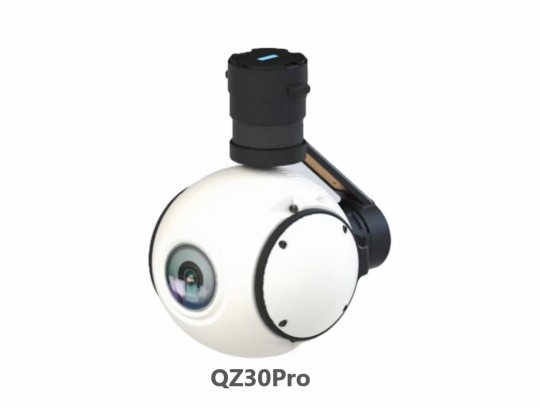
Model: QZ30Pro
AI Triaxial Single Light Electro-Optical Gimbal Camera
Features:
• 30x continuous optical zoom
• With AI human and vehicles recognition function
• 360° infinite cycle rotation
• Small size, light weight, low power consumption
• Integrated design, quick disassembly structure, easy installation
👉Please feel free to contact me for more information about the product.
Web.: https://www.qz-uav.com/
Email: [email protected]
WhatsApp/WeChat: +86 13727465078
0 notes